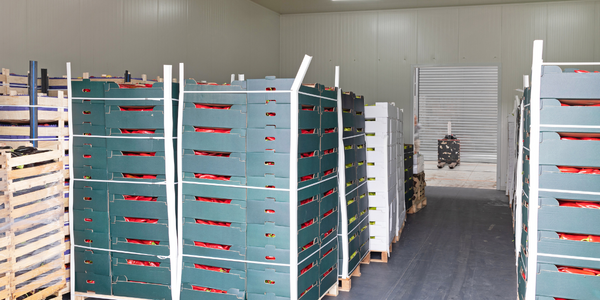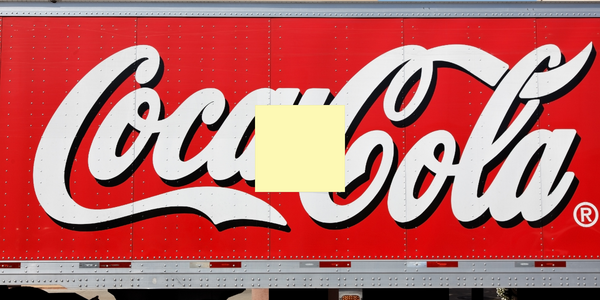Customer Company Size
Mid-size Company
Region
- Europe
Country
- Spain
Product
- DocuWare Cloud
- SAP S/4HANA Cloud
Tech Stack
- Cloud Computing
- Document Management System
- Automated Document Recognition
Implementation Scale
- Enterprise-wide Deployment
Impact Metrics
- Productivity Improvements
- Cost Savings
Technology Category
- Infrastructure as a Service (IaaS) - Cloud Computing
- Application Infrastructure & Middleware - Data Exchange & Integration
Applicable Industries
- Food & Beverage
Services
- Cloud Planning, Design & Implementation Services
About The Customer
Ahembo is a beverage company based in the Canary Islands, Spain. The company was established over 60 years ago and is known for its niche brand Clipper, a soft drink that competes with large American beverage companies on the Spanish archipelago. In addition to Clipper, Ahembo distributes more than 50 other brands, including Pepsi, 7Up, Schweppes, San Miguel, and Smirnoff Ice. The company operates nine branches and employs 200 people. Every year, Ahembo receives more than 300,000 invoices, along with purchase orders and delivery bills, amounting to over 2,000 documents processed daily.
The Challenge
Ahembo, a beverage company based in the Canary Islands, was struggling with the management of over 300,000 invoices received annually. The company was receiving these invoices in various formats and at different locations, leading to significant delays in processing. Paper documents were often lost, electronic invoices overlooked, and some documents were duplicated, leading to inconsistencies in posting and payment. The company decided to implement an electronic solution to streamline the process and improve efficiency.
The Solution
Ahembo implemented DocuWare Cloud, a document management system (DMS), to control the release of all incoming invoices. The implementation included heavy use of DocuWare’s Intelligent service, which recognizes a high percentage of documents and their index information, despite the Canary Islands’ special tax status and the variety of tax rates from over 2,000 suppliers. Today, most of Ahembo's invoices are received electronically. DocuWare retrieves the invoices from a dedicated email box, recognizes the document type and corresponding posting information, and stores the invoices fully indexed in the digital archive. Delivery bills are scanned at the branch offices and also transferred to the DMS. The system can even assign delivery bills to their corresponding order and invoice. In the two-stage approval process, employees can easily access linked documents to compare prices and conditions.
Operational Impact
Quantitative Benefit

Case Study missing?
Start adding your own!
Register with your work email and create a new case study profile for your business.
Related Case Studies.

Case Study
The Kellogg Company
Kellogg keeps a close eye on its trade spend, analyzing large volumes of data and running complex simulations to predict which promotional activities will be the most effective. Kellogg needed to decrease the trade spend but its traditional relational database on premises could not keep up with the pace of demand.

Case Study
HEINEKEN Uses the Cloud to Reach 10.5 Million Consumers
For 2012 campaign, the Bond promotion, it planned to launch the campaign at the same time everywhere on the planet. That created unprecedented challenges for HEINEKEN—nowhere more so than in its technology operation. The primary digital content for the campaign was a 100-megabyte movie that had to play flawlessly for millions of viewers worldwide. After all, Bond never fails. No one was going to tolerate a technology failure that might bruise his brand.Previously, HEINEKEN had supported digital media at its outsourced datacenter. But that datacenter lacked the computing resources HEINEKEN needed, and building them—especially to support peak traffic that would total millions of simultaneous hits—would have been both time-consuming and expensive. Nor would it have provided the geographic reach that HEINEKEN needed to minimize latency worldwide.

Case Study
Energy Management System at Sugar Industry
The company wanted to use the information from the system to claim under the renewable energy certificate scheme. The benefit to the company under the renewable energy certificates is Rs 75 million a year. To enable the above, an end-to-end solution for load monitoring, consumption monitoring, online data monitoring, automatic meter data acquisition which can be exported to SAP and other applications is required.

Case Study
Coca Cola Swaziland Conco Case Study
Coco Cola Swaziland, South Africa would like to find a solution that would enable the following results: - Reduce energy consumption by 20% in one year. - Formulate a series of strategic initiatives that would enlist the commitment of corporate management and create employee awareness while helping meet departmental targets and investing in tools that assist with energy management. - Formulate a series of tactical initiatives that would optimize energy usage on the shop floor. These would include charging forklifts and running cold rooms only during off-peak periods, running the dust extractors only during working hours and basing lights and air-conditioning on someone’s presence. - Increase visibility into the factory and other processes. - Enable limited, non-intrusive control functions for certain processes.

Case Study
Temperature Monitoring for Restaurant Food Storage
When it came to implementing a solution, Mr. Nesbitt had an idea of what functionality that he wanted. Although not mandated by Health Canada, Mr. Nesbitt wanted to ensure quality control issues met the highest possible standards as part of his commitment to top-of-class food services. This wish list included an easy-to use temperature-monitoring system that could provide a visible display of the temperatures of all of his refrigerators and freezers, including historical information so that he could review the performance of his equipment. It also had to provide alert notification (but email alerts and SMS text message alerts) to alert key staff in the event that a cooling system was exceeding pre-set warning limits.

Case Study
Coca-Cola Refreshments, U.S.
Coca-Cola Refreshments owns and manages Coca-Cola branded refrigerators in retail establishments. Legacy systems were used to locate equipment information by logging onto multiple servers which took up to 8 hours to update information on 30-40 units. The company had no overall visibility into equipment status or maintenance history.







